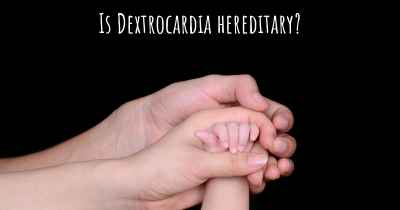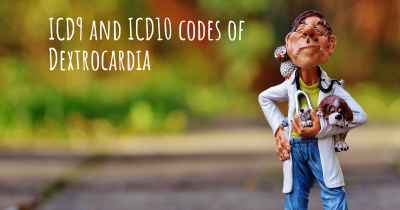What is the history of Dextrocardia?
When was Dextrocardia discovered? What is the story of this discovery? Was it coincidence or not?

Dextrocardia:
Dextrocardia is a rare congenital condition characterized by the heart being located on the right side of the chest instead of the left. This condition affects a small percentage of the population, occurring in approximately 1 in every 12,000 births. The term "dextrocardia" is derived from the Latin words "dexter" meaning right and "cardia" meaning heart.
Historical Background:
The history of dextrocardia dates back to ancient times, although the condition was not fully understood until modern medical advancements. The earliest recorded case of dextrocardia can be traced back to the 12th century, where an Egyptian mummy was discovered with the heart located on the right side of the chest. However, it wasn't until the 17th century that dextrocardia was formally recognized and documented.
17th to 19th Century:
In the 17th century, anatomists began to study and document cases of dextrocardia. One of the notable figures in the history of dextrocardia is Giovanni Battista Morgagni, an Italian anatomist who lived during the 18th century. Morgagni's work on anatomical abnormalities included the study of dextrocardia, providing valuable insights into the condition.
20th Century:
Advancements in medical imaging techniques, such as X-rays and echocardiography, in the 20th century allowed for a better understanding and diagnosis of dextrocardia. The discovery of electrocardiography by Willem Einthoven in 1903 further contributed to the understanding of heart abnormalities, including dextrocardia.
Types of Dextrocardia:
There are two main types of dextrocardia: dextrocardia with situs solitus and dextrocardia with situs inversus.
Dextrocardia with Situs Solitus:
In this type, the heart is located on the right side of the chest, but other organs are in their usual positions. This is the less common type of dextrocardia, accounting for approximately 20% of cases.
Dextrocardia with Situs Inversus:
In this type, not only is the heart located on the right side, but other organs are also mirrored or reversed from their normal positions. This occurs in approximately 80% of dextrocardia cases and is often associated with other congenital heart defects.
Causes and Symptoms:
The exact cause of dextrocardia is not fully understood, but it is believed to be a result of abnormal development during fetal development. Some cases of dextrocardia are associated with genetic conditions, while others occur sporadically without any known cause.
Most individuals with dextrocardia lead normal lives and may not even be aware of their condition until it is incidentally discovered during medical examinations. However, some individuals with dextrocardia may experience associated congenital heart defects or other health issues.
Treatment and Management:
The treatment and management of dextrocardia depend on the presence of associated heart defects or other health conditions. In cases where no other abnormalities are present, no specific treatment is required, and individuals can lead normal lives with regular medical check-ups.
If associated heart defects are present, treatment may involve surgical interventions to correct the abnormalities. The specific treatment plan will depend on the type and severity of the associated defects.
Conclusion:
Dextrocardia is a rare congenital condition where the heart is located on the right side of the chest. Although the condition has been documented since ancient times, it was not fully understood until modern medical advancements. With the development of medical imaging techniques and increased knowledge of congenital heart defects, the diagnosis and management of dextrocardia have significantly improved. While most individuals with dextrocardia lead normal lives, some may require treatment for associated heart defects or other health conditions.








